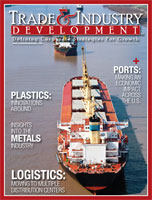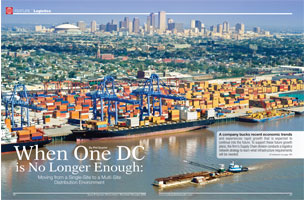LOGISTICS: When One DC is No Longer Enough - Moving From a Single-Site to a Multi-Site Distribution Environment
While Supply Chain and Real Estate will be impacted heavily during the early stages of the design and implementation of a second DC, leaving those groups to drive the implementation process alone would be short-sighted and will ensure a difficult, if not impossible, facility startup for this example company. Many other stakeholders within the firm should be working closely with these groups to ensure a seamless transition into a multi-DC environment. I would suggest that adding the second location in a distribution network requires an organizational transformation. There are many new requirements that have to be identified and developed in a multi-facility distribution network that were not necessary for a single-facility network. Existing processes upstream and downstream of the distribution operation must be reviewed and revised, and the implementation of the facility itself must be integrated between many different work streams. more....


